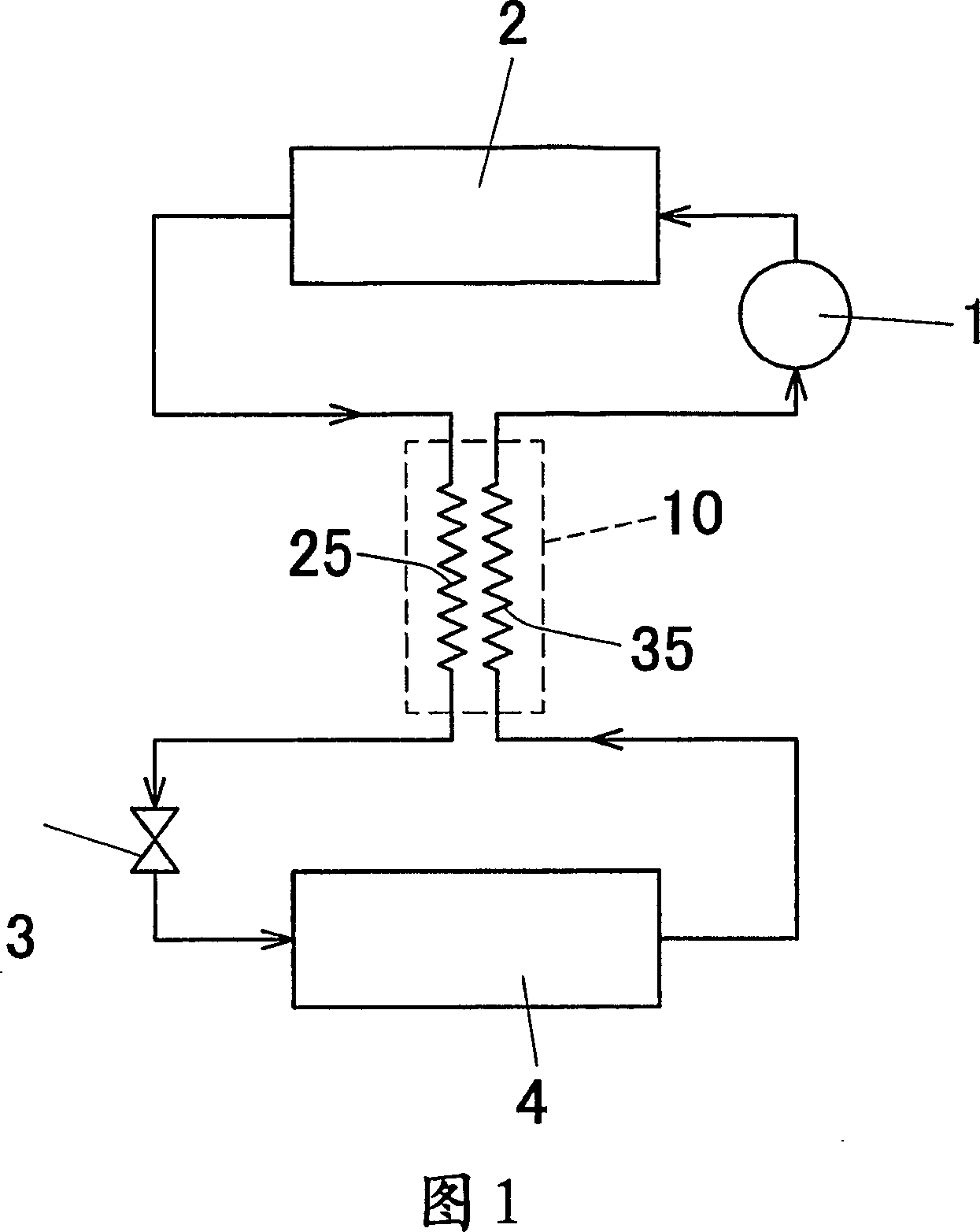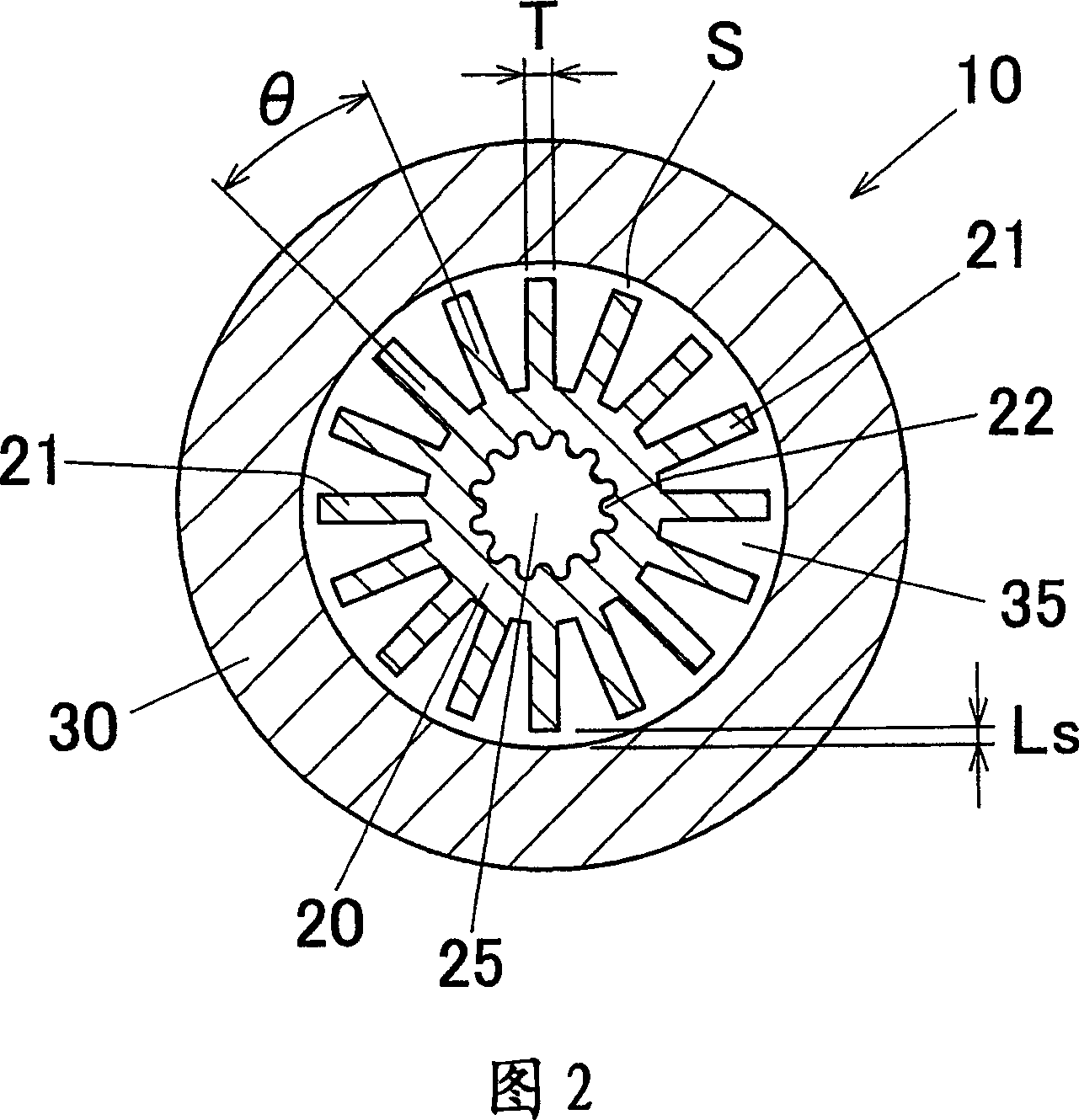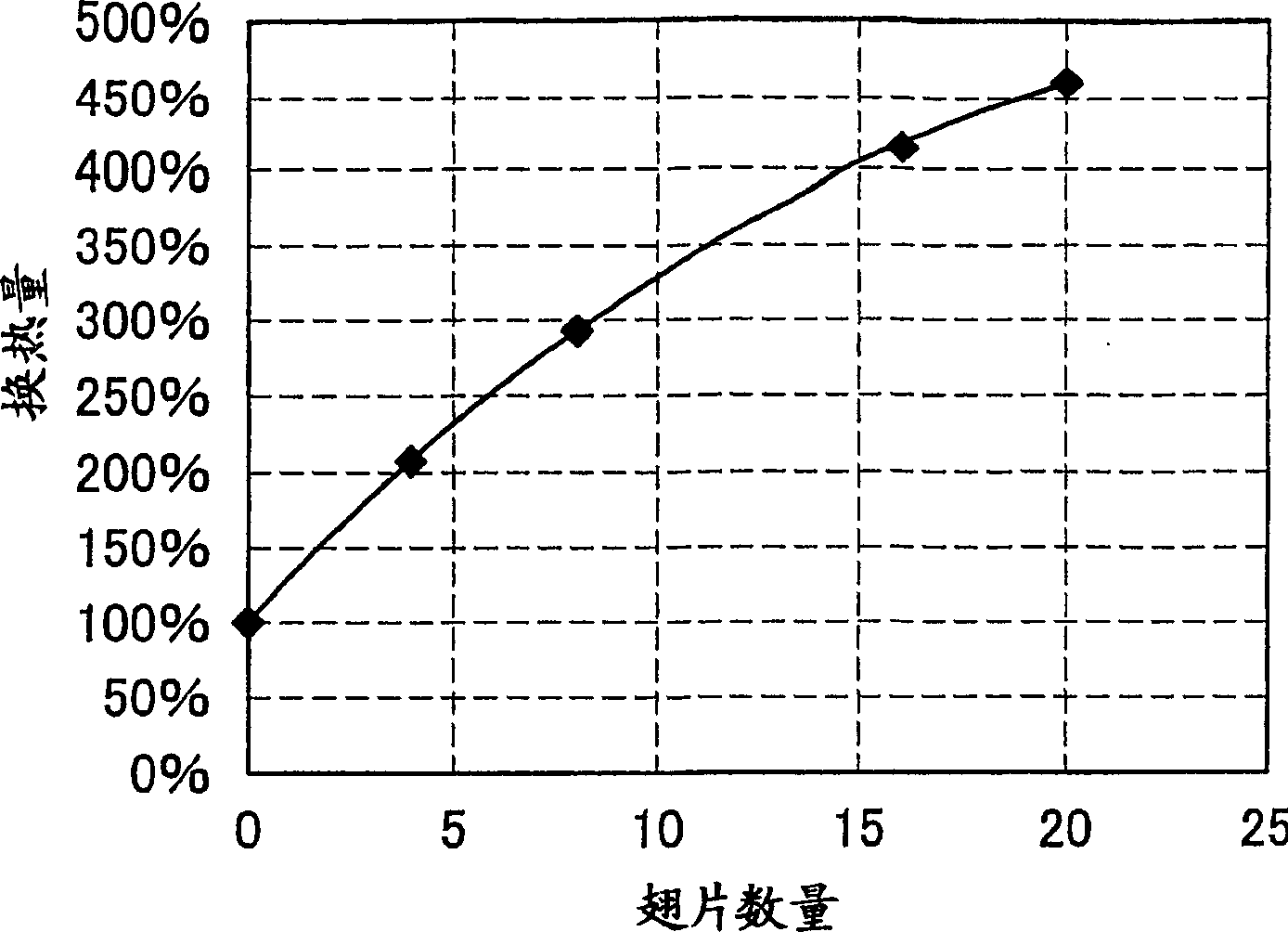Heat exchanger, intermediate heat exchanger, and regrigeration cycle
An intermediate heat exchanger and refrigeration cycle technology, applied in the direction of indirect heat exchangers, heat exchanger types, refrigerators, etc., can solve problems such as difficult bending processing, reduce heat transfer performance, increase flow resistance, etc., and achieve good bending performance , Improve heat transfer efficiency, improve the effect of heat transfer performance
- Summary
- Abstract
- Description
- Claims
- Application Information
AI Technical Summary
Problems solved by technology
Method used
Image
Examples
example 1
[0097] In the automotive air-conditioning refrigeration system using the intermediate heat exchanger 10 shown in Figure 1, in which the inner tube 20 with fins 21 on the outer wall is inserted into the outer tube 30, the number of fins is different The exchange heat of each intermediate heat exchanger 10 is obtained by computer simulation. The results are shown in Table 1, where the heat transfer is expressed in % (when the number of fins is 0, it is 100%).
[0098] The conditions are set as follows: the length of the intermediate heat exchanger (the length of the outer tube) is set to 500 mm, the outer diameter of the outer tube 30 is set to 21.0 mm, the inner diameter of the outer tube 30 is set to 15.0 mm, and the inner tube 20 includes outer fins 21 The outer diameter of the inner tube 20 is set to 14.0mm, the outer diameter of the inner tube 20 excluding the outer fin 21 is set to 7.0mm, the inner diameter of the tubular part of the inner tube 20 excluding the inner fin 2...
example 2
[0102] Under the same conditions as Example 1, the flow resistance of the low-pressure side refrigerant heat exchange channel (the channel between the inner tube and the outer tube) of each heat exchanger with different numbers of fins was obtained by computer simulation. The results are shown in Table 1, where the flow resistance is expressed in % (when the number of fins is 0, it is 100%).
[0103] Table 2
[0104]
[0105] As shown in Table 1, as the number of fins increases, the heat transfer performance increases, and thus the amount of heat transfer increases. On the other hand, as shown in Table 2, as the number of fins increases, the flow resistance increases and thus the heat transfer decreases. Considering comprehensively, when the number of fins is 13-18, the flow resistance can be controlled within a certain range, and proper heat transfer performance can be obtained. In particular, when the number of fins is 15 to 17, the flow resistance is sufficiently restric...
PUM
 Login to View More
Login to View More Abstract
Description
Claims
Application Information
 Login to View More
Login to View More - R&D Engineer
- R&D Manager
- IP Professional
- Industry Leading Data Capabilities
- Powerful AI technology
- Patent DNA Extraction
Browse by: Latest US Patents, China's latest patents, Technical Efficacy Thesaurus, Application Domain, Technology Topic, Popular Technical Reports.
© 2024 PatSnap. All rights reserved.Legal|Privacy policy|Modern Slavery Act Transparency Statement|Sitemap|About US| Contact US: help@patsnap.com










